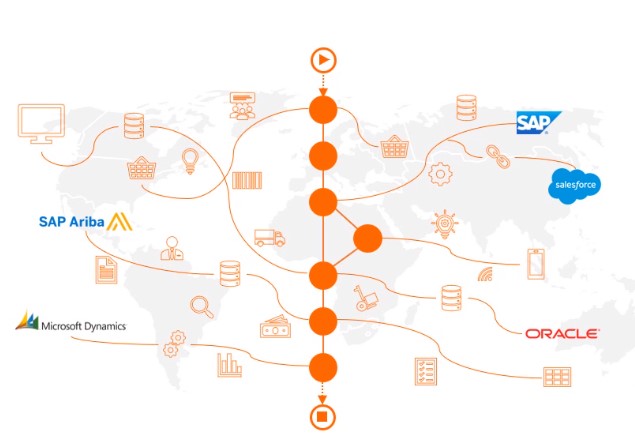
- SAP Community
- Products and Technology
- Product Lifecycle Management
- PLM Blogs by Members
- SAP Process Mining for Stabilization of Processes ...
Product Lifecycle Management Blogs by Members
Get insider knowledge about product lifecycle management software from SAP. Tap into insights and real-world experiences with community member blog posts.
Turn on suggestions
Auto-suggest helps you quickly narrow down your search results by suggesting possible matches as you type.
Showing results for
santanuray_sap
Participant
Options
- Subscribe to RSS Feed
- Mark as New
- Mark as Read
- Bookmark
- Subscribe
- Printer Friendly Page
- Report Inappropriate Content
11-26-2020
1:34 AM
We all have faced some common questions on process like
- Why a simple P2P process has so many price changes or no scanned POs?
- Why we can't track from where some of the CVs came in our recruitment process?
- Why there is always some issue in overtime payment of some employees?
- Why our AP and AR invoice consolidation process are not full proof?
- How can we have better control on Asset Scrapping?
- How to map current Procurement, Sales, HR or Finance Process in SAP S/4 HANA?
- How can customer know that their processes will be available in SAP S/4 HANA out of box?
- How SAP R/3 Processes will have better control or fitment in SAP S/4 HANA?
The answer to all these questions are SAP process mining. I am fortunate to get an opportunity to work in one of the most recent tool of Process Mining-Celonis.
I thought of explaining my personal insight as it helps to know how other colleagues are using it in their Organization and how customer demand is changing.
First, my blog is absolutely on information I got from Celonis and SAP AG. No customer data or concept in anyway explained here. Hence, I have taken the standard process which is standard both for Celonis and SAP AG.
How it works:
For all workflows or process, any process interactions produce data which is stored in transactional system like SAP, Oracle, Salesforce, MS Dynamics etc. These Data contains three important pieces of information.
Information about:
- Activity or process step conduction
- The Time frame when the process happened
- Object or for which the activities were executed.
The combination of these three-important element is a Digital footprint.

Source : Celonis
Celonis has the capability to get the data from different sources into the its own system to analyse the data. If there is no direct connection, then ABAP extractor can be used to extract the data and feed into celnis. For our POC, we have also uploaded data from our source system into the Celonis Intelligent cloud.
Open APIs can also be used to connect to any systems or customer app.
Event collection can extract and transform all necessary data needed for creating the Data Model for process Analytics.
Gathering and processing these data is done by Event collection.

Source Celonis
Now we are ready with our data, lets do some processing with our data model.
Glance of some Processes:

Source SAP and Celonis
In both the process shown above in the picture, we see straight forward AS-IS Process both for P2P and HR Recruitment. The Celonis initial analysis also gives some analysis as shown in the below picture.

Source Celonis

Source Celonis
In the above picture we can see that out of 279K POs created, 107K follows the standard P2P process. What about the remaining 177K?
The 107K POs is 39% of the total invoices. So, remaining 61% has potential inefficiencies. If this can be fine-tuned, then the P2P process is completely stabilized.

Source Celonis

Source Celonis
The right-hand side in the celonis screen shows the PO’s value by months, Oder Value w.r.t Material Group and Purchase Order by Vendor along with Net Value.
How to find process deviation?
By selecting the variant as shown in the picture, we can see that there is a deviation of 38089 POs are created without a Purchase Requisition.
There is also a change in price as shown in the picture for 37270 POs. Thereby consumption of more time and delaying the process. As shown in picture below

Source Celonis
Conclusion:
The above process can be fine-tuned in the following ways
- Ensure Purchase Requisition are made mandatory for creation of any POs.
- Direct Good Received shows maverick buying. This can be taken care.
- The change in price, to and fro process can be avoided.
How this can be used in S/4 HANA Assessment
- We can know the Out of Box simplification activities for these processes.
- How Fiori Apps can further reduce time of user and simply the purchase.
- How catalogue purchase can be introduced if it is not already existing.
In my next blog I shall try to project some of the work we have done in space of Human Resource which has given us some detail in depth analysis on recruitment process, compensation and Employee satisfaction.
We know but data driven proof that salary has no relation with Job Satisfaction.
- SAP Managed Tags:
- SAP Data Insight,
- SAP Process Orchestration
8 Comments
You must be a registered user to add a comment. If you've already registered, sign in. Otherwise, register and sign in.
Labels in this area
Related Content
- Marketability Assessment of Compliance Disclosures in Product Lifecycle Management Blogs by SAP
- Operational Risk Management in SAP S/4HANA Cloud Public Edition 2402 in Product Lifecycle Management Blogs by SAP
- Operational Risk Management in SAP S/4HANA Cloud Public Edition 2308 in Product Lifecycle Management Blogs by SAP
- SAP PLM Technology Bytes: ISO Information Security Management System Certification of SAP Enterprise Product Development in Product Lifecycle Management Blogs by SAP
- SAP Enterprise Product Development: What’s in for Automotive in Product Lifecycle Management Blogs by SAP